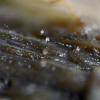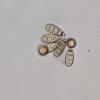
02-12-2025 18:59
This pair of ascos 2.5cm across were on recently b

02-12-2025 19:25
Buckwheat PeteHello, can anyone identify this hairy fungus growi

30-11-2025 12:53
 Edvin Johannesen
Edvin Johannesen
White short-stipitate apothecia found on thin twig

30-11-2025 10:47
 William Slosse
William Slosse
I recently found a collection of small Peziza sp.

27-11-2025 12:01
Thomas Læssøehttps://svampe.databasen.org/observations/10496727

27-11-2025 11:46
Thomas Læssøehttps://svampe.databasen.org/observations/10493918

17-09-2025 10:50
Heather MerryleesHi there!I am hoping for any advice on the identif

29-11-2025 08:40
 Andreas Millinger
Andreas Millinger
Hello,on a splintered part of a branch on the grou

28-11-2025 16:45
Nogueira HéctorNovember 23, 2025 Requejo de Sanabria (León) SPAI
Bipolaris ?
Chris Johnson,
27-02-2015 14:27
Having difficulty pinning this one down.
Found on pony dung.
Conidiophores unbranched, thick-walled, 140-180 x 5 µm
Conidia 4-distoseptate, 20.9-24.6 x 8.7-11.0 µm
Reference: the Key in 'The genus Bipolaris' by Manamgoda D S, et al.
Grateful for any help.
Cordially, Chris
Shane John,
27-02-2015 17:23
Re : Bipolaris ?
Bipolaris is mostly ID'd by the germination at both poles. Several similar genera to this morpho-typic spore.
Chris Johnson,
27-02-2015 17:33
Re : Bipolaris ?
Thank you for your thoughts. Can you point me in the right direction?
Chris
Chris
Shane John,
27-02-2015 18:04
Re : Bipolaris ?
Very nice photos BTW. Some options would be 1) Pseudospiropes, 2) Drechslera (may bet).
The genus Bipolaris
D.S. Manamgoda,1,2,3 A.Y. Rossman,3 L.A. Castlebury,3 P.W. Crous,5,6 H. Madrid,5,7 E. Chukeatirote,4 and K.D. Hyde1,2,4,*
The genus Bipolaris
D.S. Manamgoda,1,2,3 A.Y. Rossman,3 L.A. Castlebury,3 P.W. Crous,5,6 H. Madrid,5,7 E. Chukeatirote,4 and K.D. Hyde1,2,4,*
Chris Johnson,
27-02-2015 19:07
Re : Bipolaris ?
Thanks for the compliment and pointers, I'll do some more research.
I have The genus Bipolaris but not of help in this instance.
Chris
I have The genus Bipolaris but not of help in this instance.
Chris
Chris Yeates,
27-02-2015 19:48

Re : Bipolaris ?
Hi Chris
This is rather confusing . . . .
the conidia in the 3rd and 5th photographs are classic Sporidesmiella (Endophragmia) hyalosperma, a very common plurivorous "hyphomycete" (see attached screen-grab from M.B. Ellis's Dematiaceous Hyphomycetes (1971) Fig. 104. But that has percurrent conidiogenesis; and the conidiophore in photograph 4 suggests sympodial conidiogensis - is it possible more than one fungus is involved?
best wishes
Chris
This is rather confusing . . . .
the conidia in the 3rd and 5th photographs are classic Sporidesmiella (Endophragmia) hyalosperma, a very common plurivorous "hyphomycete" (see attached screen-grab from M.B. Ellis's Dematiaceous Hyphomycetes (1971) Fig. 104. But that has percurrent conidiogenesis; and the conidiophore in photograph 4 suggests sympodial conidiogensis - is it possible more than one fungus is involved?
best wishes
Chris
Paul Cannon,
27-02-2015 20:06
Re : Bipolaris ?
Hello everyone
I thought this looked familiar so I consulted Paul Kirk, who identified your fungus as Sporidesmiella hyalosperma - he described the genus so he should know. But there is a var. novae-zelandiae which proliferates sympodially rather than percurrently as in var. hyalosperma, and it's been recorded a few times from Scotland though not on dung. Traditionally this might be considered a rather excessive difference to be treated at varietal level, but if you look at the pictures in the file attached you can see that there's not such a massive change in development.
Great images, Chris - keep up the good work...
All good wishes
Paul
I thought this looked familiar so I consulted Paul Kirk, who identified your fungus as Sporidesmiella hyalosperma - he described the genus so he should know. But there is a var. novae-zelandiae which proliferates sympodially rather than percurrently as in var. hyalosperma, and it's been recorded a few times from Scotland though not on dung. Traditionally this might be considered a rather excessive difference to be treated at varietal level, but if you look at the pictures in the file attached you can see that there's not such a massive change in development.
Great images, Chris - keep up the good work...
All good wishes
Paul
Chris Yeates,
27-02-2015 20:22

Re : Bipolaris ?
So I got pretty close then . . . . ;-)
Chris
Chris
Chris Johnson,
27-02-2015 20:54
Re : Bipolaris ?
Hi Chris & Paul
Many thanks for the identification and the insight into the varieties. These terms are new to me so I will need to read up. This was a small cluster so I doubt the two varieties are together.
Paul - did Paul Kirk express an opinion as to which variety I have?
I'll check the sample again tomorrow and see if I can get some more images.
Regards, Chris
Many thanks for the identification and the insight into the varieties. These terms are new to me so I will need to read up. This was a small cluster so I doubt the two varieties are together.
Paul - did Paul Kirk express an opinion as to which variety I have?
I'll check the sample again tomorrow and see if I can get some more images.
Regards, Chris
Chris Yeates,
27-02-2015 21:23

Re : Bipolaris ?
Hi Chris
you definitely have var. novae-zelandiae - dare one say a very good (or should that be bad?) example of the strange (and to my mind unjustifiable) idea of reducing all subspecific taxa to the parent binomial as now done on Species Fungorum:
http://www.speciesfungorum.org/Names/SynSpecies.asp?RecordID=110101
Though not done on Mycobank:
http://www.mycobank.org/BioloMICS.aspx?Table=Mycobank&Rec=187284&Fields=All
I note Paul Cannon's comment "this might be considered a rather excessive difference to be treated at varietal level, but if you look at the pictures in the file attached you can see that there's not such a massive change in development" surely an argument for keeping the varieties separate.
The language used to describe all the phenomena one encounters when starting to look at hyphomycetes is rather overwhelming, so don't worry too much, Chris. To quote from the excellent introduction to Seifert et al.'s Hyphomycetes:
" ... the axis of the conidiogenous cell extends either in a straight line (percurrent), or by the development of a series of offset new growing points (sympodial).
Percurrent cells often bear annellations, i.e. an often closely-spaced progressive series of ring-like scars encircling the cell. Sympodial cells often bear scars or denticles".
You can see those annellations in the image of var. hyalosperma I posted above. You can see the series of tiny scars showing where the conidia were formed on the extending axis in your photo 4; you can also see that the conidia are being formed as a series along the axis in that very nice first image. And you can see both types of conidial formation in the paper Paul C has kindly posted.
best wishes
Chris
you definitely have var. novae-zelandiae - dare one say a very good (or should that be bad?) example of the strange (and to my mind unjustifiable) idea of reducing all subspecific taxa to the parent binomial as now done on Species Fungorum:
http://www.speciesfungorum.org/Names/SynSpecies.asp?RecordID=110101
Though not done on Mycobank:
http://www.mycobank.org/BioloMICS.aspx?Table=Mycobank&Rec=187284&Fields=All
I note Paul Cannon's comment "this might be considered a rather excessive difference to be treated at varietal level, but if you look at the pictures in the file attached you can see that there's not such a massive change in development" surely an argument for keeping the varieties separate.
The language used to describe all the phenomena one encounters when starting to look at hyphomycetes is rather overwhelming, so don't worry too much, Chris. To quote from the excellent introduction to Seifert et al.'s Hyphomycetes:
" ... the axis of the conidiogenous cell extends either in a straight line (percurrent), or by the development of a series of offset new growing points (sympodial).
Percurrent cells often bear annellations, i.e. an often closely-spaced progressive series of ring-like scars encircling the cell. Sympodial cells often bear scars or denticles".
You can see those annellations in the image of var. hyalosperma I posted above. You can see the series of tiny scars showing where the conidia were formed on the extending axis in your photo 4; you can also see that the conidia are being formed as a series along the axis in that very nice first image. And you can see both types of conidial formation in the paper Paul C has kindly posted.
best wishes
Chris
Chris Johnson,
27-02-2015 23:13
Re : Bipolaris ?
Hi Chris
Thanks for the detailed explanation, I doubt it would be described that well elsewhere.
So, a rare fungus on rare Eriskay Pony dung!
All the best, Chris
Thanks for the detailed explanation, I doubt it would be described that well elsewhere.
So, a rare fungus on rare Eriskay Pony dung!
All the best, Chris
Chris Yeates,
28-02-2015 02:20

Re : Bipolaris ?
For those not aware of these wonderful horses - with an ancient pedigree - and their story see:
http://www.eriskaypony.org.uk/
there are 300 or fewer breeding females registered in the world today
Chris
http://www.eriskaypony.org.uk/
there are 300 or fewer breeding females registered in the world today
Chris
Shane John,
01-03-2015 00:42
Re : Bipolaris ?
Thanks so much Chris for the Kirk paper and getting it right. I have only seen Sporidesmiella growing once, but have seen the spores in the air and from tape lifts on wood.
Thanks for the elucidation!
John Shane
Thanks for the elucidation!
John Shane






 Kirk-1982--0001.pdf
Kirk-1982--0001.pdf